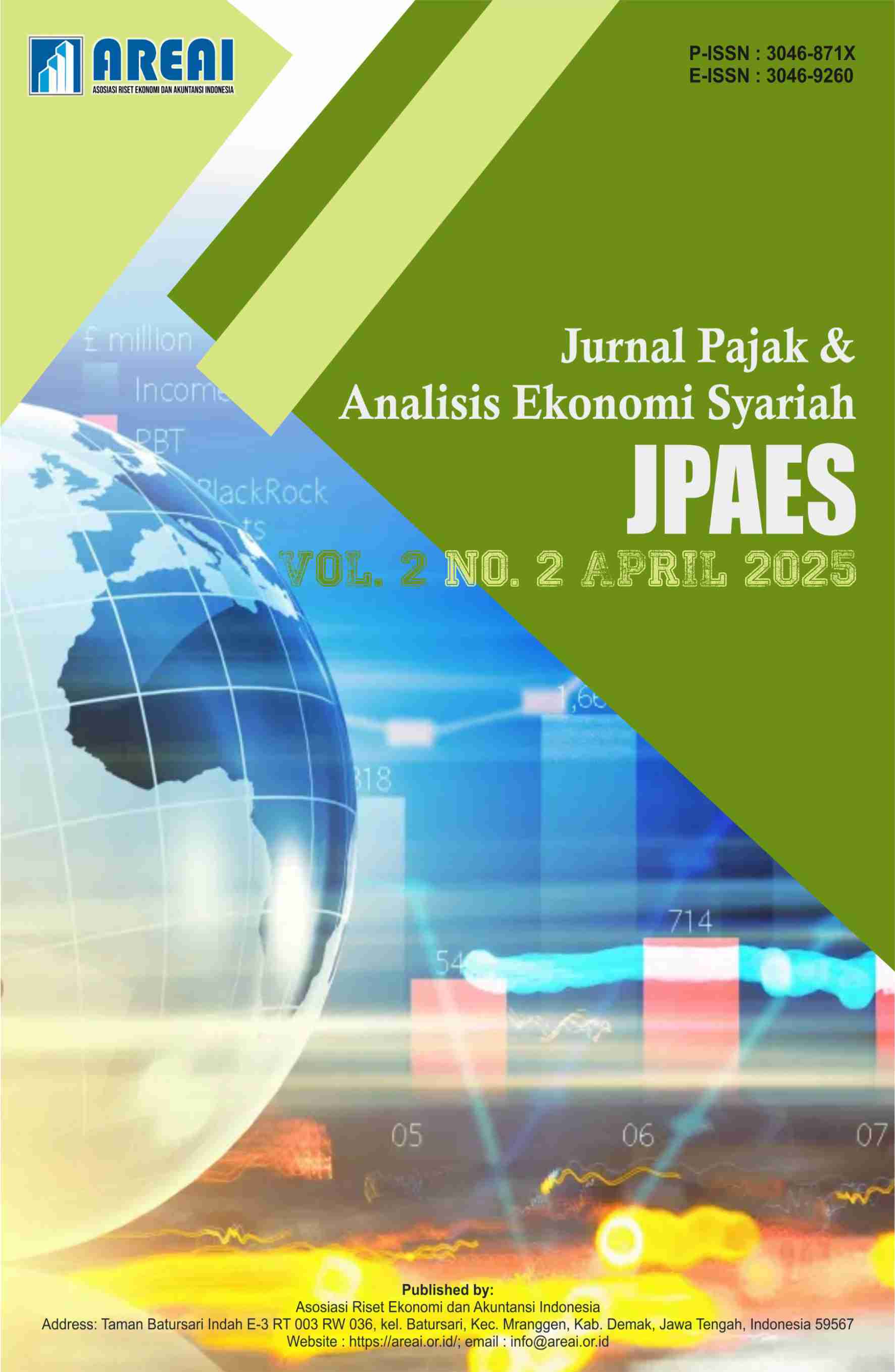The Balance Of The Money And Goods Markets From An Islamic Economic Perspective
DOI:
https://doi.org/10.61132/jpaes.v2i2.912Keywords:
Money Market, Goods Market, Islamic EconomicsAbstract
This study aims to determine the balance of the money and goods markets from an Islamic economic perspective. The research method used is the study of literature from articles, papers, books, and other sources that support the problem under study. The results of this study indicate that Islamic economics states that when prices are fixed, income and interest, or the expected rate of profit, are at a level that balances the commodity market and the money market. The equilibrium level of income and welfare is at the intersection of the IS and LM curves, using the interest rate and the expected rate of return. In Islamic economics, a similar mechanism occurs in the economy that income and the anticipated rate of return lead to the equilibrium level. However, as previously mentioned, changes in income do not directly cause changes in the money market interest rate, which creates a balance between the demand for money and the money supply. Therefore, the interest rate on the interest income panel can only be determined by the IS curve without the LM curve. In other words, the interest rate always appears on the IS curve but can also occur outside the LM curve.
Downloads
References
Fadilla, F. (2017). Permasalahan Ekonomi Sesungguhnya dalam Islam. Islamic Banking: Jurnal Pemikiran Dan Pengembangan Perbankan Syariah, 3(1), 1–10. https://doi.org/10.36908/isbank.v3i1.71
Hakim, L. (2017). Distorsi Pasar Dalam Pandangan Ekonomi Islam. Ekomadania, 1, 1–15.
Hasyim, A. . (2016). Ekonomi Makro. Kencana.
Huda, N. (2012). Keuangan Publik Islami; Pendekatan Teoritis dan Sejarah. Kencana.
Ilyas, R. (2016). Konsep Uang dalam Perspektif Ekonomi Islam. Jurnal Bisnis Dan Manajemen Islam, 4(1), 35–57.
Kasmir. (2012). Bank dan Lembaga keuangan lainnya. Rajawali Press.
Machmud, A., & Rukmana. (2010). Bank Syariah Teori, Kebijaksanaan, dan Studi Empiris di Indonesia. Erlangga.
Mankiw, R. G. (2007). Makroekonomi. Erlangga.
Mishkin, F. (2008). Ekonomi Uang, Perbankan, dan Pasar Keuangan. Salemba Empat.
Prasetyo, pamungkas aji. (2013). Identifikasi Faktor Yang Mempengaruhi Rendahnya Pembiayaan Bagi Hasil Perbankan Syariah ( Studi Kasus PT . BRI Syariah Kantor Cabang Malang ). Jurnal Ilmiah.
Putri, F. W. (2014). Meningkatkan Pembiayaan Berbasis Bagi Hasil Melalui Penghimpunan Dana Pihak Ketiga dan Penetapan Tingkat Bagi Hasil. Jurnal Universitas Komputer Indonesia.
Risnaningsih, I., & Mulyasari, H. (2021). Upaya Perbankan Syari’ah dalam Perkuatan Permodalan Sektor Riil. Jurnal Llmiah Ekonomi Dan Keuangan Syariah, 2(2), 89–96.
Riva’i, V. (2013). Financial Institution Manajemen. PT. Raja Grafindo Persada.
Sya’diah, A. N. (2021). Teori Keseimbangan Umum dalam Ekonomi Islam. Jurnal Ilmu Akuntansi Dan Bisnis Syariah, 3(2), 59–74. https://www.ptonline.com/articles/how-to-get-better-mfi-results
Triwahyuni. (2021). Pengendalian Inflasi, Moneter, dan Fiskal dalam Perspektif Ekonomi Makro Islam. Jurnal Pemikiran Dan Pengembangan Ekonomi Syariah, 6(2), 199–210.
Umi, N. T., Apriani, R., Sari, M. P., Pundarika, R., & Noviarita, H. (2022). Dampak Krisis Ekonomi Terhadap Tingkat Pertumbuhan di Indonesia dalam Pandangan Islam. SALAM: Islamic Ekonomics Journal, 3(2), 101–109.
Wicaksono, J. W. (2019). Relevansi Model IS-LM Keseimbangan Pasar Barang dan Pasar Uang. Dinar: Jurnal Prodi Ekonomi Syari’ah, 3(1), 1–29.
Wulandari, C., & Zulqah, K. A. (2020). Tinjauan Islam terhadap Mekanisme Pasar dan Penanganan Distorsinya. Journal of Islamic Economics and Finance Studies, 1(1), 82. https://doi.org/10.47700/jiefes.v1i1.1923
Downloads
Published
How to Cite
Issue
Section
License
Copyright (c) 2025 Jurnal Pajak dan Analisis Ekonomi Syariah

This work is licensed under a Creative Commons Attribution-ShareAlike 4.0 International License.





